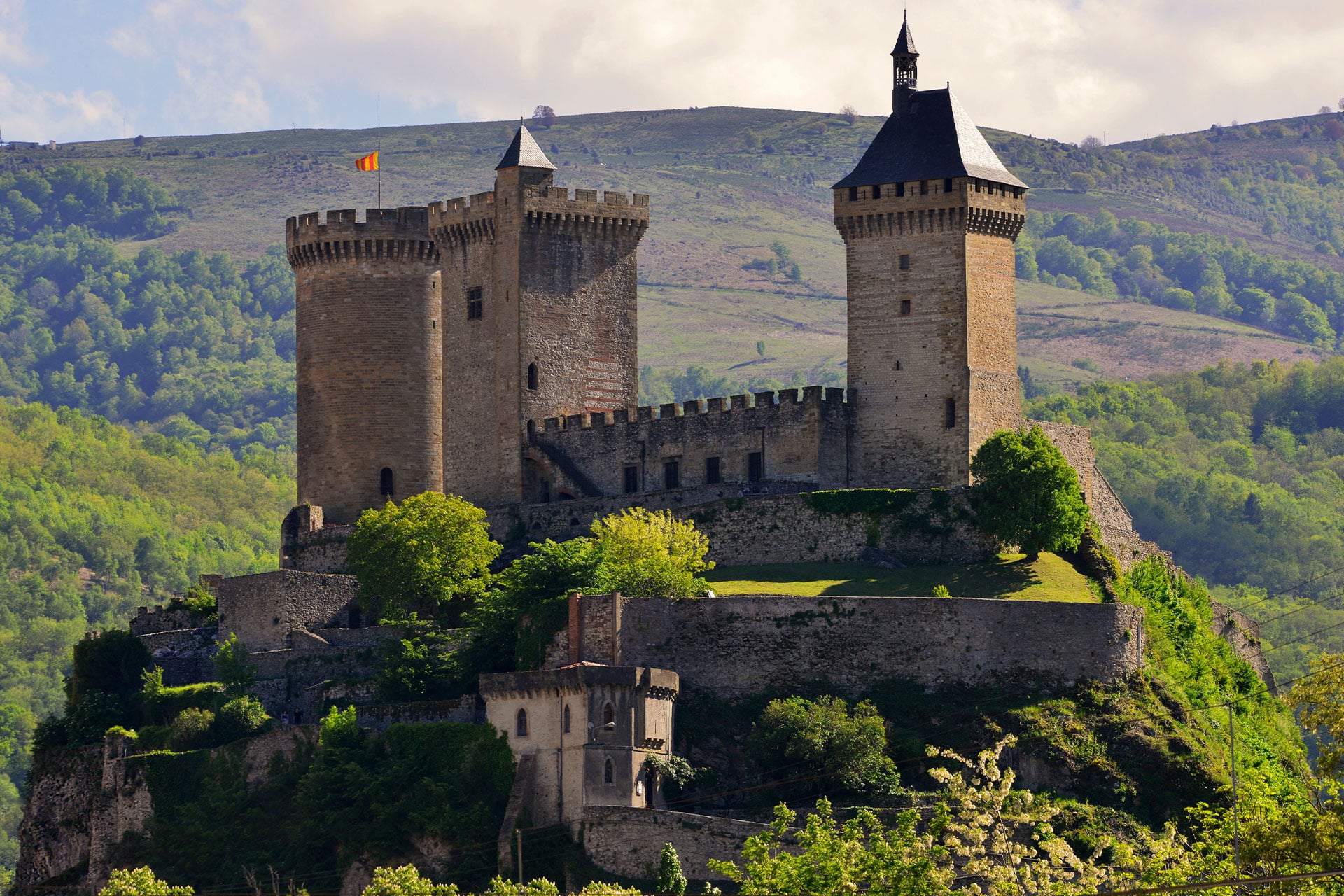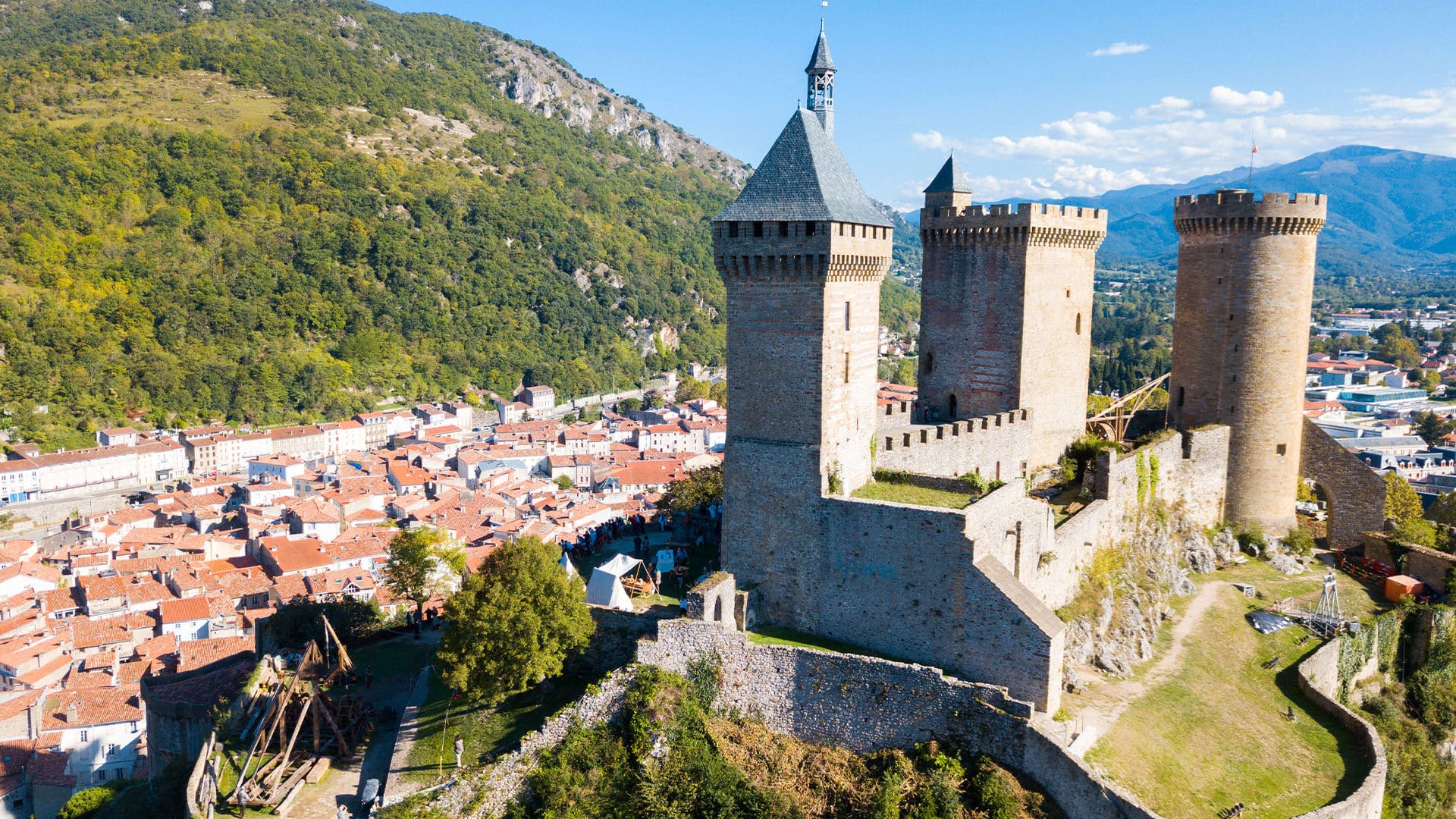A thousand-year-old castle with many lives
The Château de Foix, a historic site dating back to the 10th century, bears witness to the architectural and functional evolution through the ages. After its partial destruction in the late 15th century, it was rebuilt in 1741 by the Count of Ségur. Having been used as a prison with additions in the 19th century, the château is distinguished by its three emblematic towers, one of which housed the dungeon and the others dating from the 10th and 12th centuries respectively. The interior, spread over four floors with cloister-arched vaults, offers a unique insight into medieval history and the social changes that have taken place over time.


The Towers of Château de Foix:
History and Transformation
Château de Foix, a major historical site, traces its origins back to the 10th century. This emblematic building has played a crucial role in the region’s history, bearing witness to the various eras and transformations it has undergone.
The end of the 15th century was a pivotal period for the château, marked by the capture of the castle and the consequent destruction of the fortifications. This period saw the disappearance of the advanced works, the perimeter walls and the filling in of the cisterns, significantly altering its appearance and structure.
In 1741, the château was reborn under the aegis of the Comte de Ségur, governor of the Pays de Foix. This reconstruction has given new life to this historic structure.
The use of Château de Foix as a prison has also left its mark on its history. A building was added to the north tower to accommodate this new function. Around 1820, the departmental prison was restored and enlarged, reflecting the château’s ongoing evolution over the centuries.
The château comprises three distinct towers: the north tower, which once housed the dungeon; the central tower, dating from the 10th century; and the circular south tower, dating from the 12th century. The latter features a corbelled platform. The château’s interior, spread over four floors, features cloister-arched vaults, each lit by a large cross-beam.
These architectural features make Château de Foix a place of great historical and cultural value, attracting history buffs, tourists and researchers keen to explore this important part of France’s heritage.






























